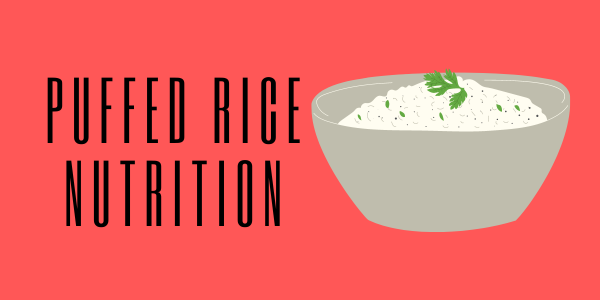
For centuries, puffed rice has been a common snack in numerous cultures due to its crisp and light texture. Puffed rice has been incorporated into many delectable dishes, ranging from the classic Indian bhel puri to contemporary breakfast cereals. Have you ever given the nutritious value those little grains contain any thought, though, beyond just their mouthwatering flavor and gratifying crunch?
We’ll go into the realm of puffed rice nutrition in this extensive tutorial. We’ll look at its nutritional value, health advantages, and suitability for a balanced diet. Now let’s explore and learn the mysteries of this modest yet powerful grain.
Understanding Puffed Rice:
The process of making puffed rice, commonly referred to as “murmura” or “pori,” involves boiling rice kernels under high pressure until they expand and take on their distinctively fluffy texture. Puffed rice is made using a special processing technique that modifies its nutritional makeup, unlike regular rice.
Nutritional Profile:
The low calorie content of puffed rice is one of its main nutritional advantages. About 54 calories make up a cup of puffed rice, which makes it a great choice for people trying to watch their weight. Puffed rice is also naturally fat-free, which makes it a heart-healthy option for anyone who are careful how much fat they eat.
Puffed rice has a surprising amount of carbs in relation to its low calorie and fat levels. About 12 grams of carbs are included in a one cup serving, giving it a quick and easy source of energy. Because of this, puffed rice is the perfect food for athletes and other energetic people who require an energy boost before or after exercise.
It’s important to remember, too, that compared to other whole grains, puffed rice has comparatively less protein and fiber. Less than 1 gram of fiber and approximately 1 gram of protein can be found in a cup portion. Puffed rice can nevertheless add to your overall intake of these nutrients when paired with other foods high in protein and fiber, even though it might not be a major source on its own.
Micronutrients:
Puffed rice is not especially high in vitamins and minerals in terms of micronutrients. It does, however, contain trace levels of important elements, such as B vitamins, iron, and magnesium. These micronutrients are essential for the body’s ability to produce red blood cells, process energy, and operate as nerves.
Health Benefits Puffed Rice Nutrition:
Despite its simple composition, puffed rice offers several health benefits:
- Low in Calories: Because puffed rice has little calories, it can assist people in maintaining a healthy weight. It gives your diet a delightful crunch without adding extra calories.
- Quick Source of Energy: The body absorbs and digests the carbohydrates in puffed rice quickly, giving rise to a quick energy source. Because of this, it’s the perfect snack for replenishing after exercise or on hectic days.
- Versatile and Convenient: As a snack, puffed rice can be eaten on its own or added to a variety of foods, including savory mixes, breakfast cereals, and snack bars. Its adaptability makes it a practical choice for people with hectic schedules.
- Gluten-Free Option: Grain substitutes like wheat, barley, and rye that contain gluten can be substituted with puffed rice, which is a tasty and safe option for people with celiac disease or gluten sensitivity.
Incorporating Puffed Rice into Your Diet:
After learning about the dietary advantages of puffed rice, let’s talk about how to include it in your diet:
- Breakfast: Puffed rice can be a great way to add some crunch to your oatmeal or cereal in the morning. It can also be added as a crunchy garnish to smoothie or yogurt bowls.
- Snacks: A bag of puffed rice can be kept on hand for an easy and filling snack. Enjoy it on its own as a guilt-free treat or combine it with nuts, seeds, and dried fruit to make a DIY trail mix.
- Salads: To give salads an additional crunch and texture, sprinkle puffed rice on top. It gives leafy greens, veggies, and plant-based protein sources like tofu or grilled chicken a delicious contrast.
- Desserts: Use your imagination while creating dessert recipes by including puffed rice. Add it to homemade granola bars, rice crispy snacks, or chocolate bark for a sweet treat that tastes even better.
Conclusion:
In conclusion, despite the humble appearance of puffed rice, its nutritious significance cannot be understated. Puffed rice is a versatile, low-calorie food that can provide a rapid energy boost without adding too many calories to an otherwise healthy, well-balanced diet. Puffed rice provides taste and nutrients in every crunchy mouthful, whether it is eaten as a snack, cereal for breakfast, or an ingredient in savory and sweet meals. Thus, the next time you’re craving a snack, think about having a bowl of puffed rice and enjoy all of its health advantages.
Hi there! Why not read more if you’re loving what you’re reading? There is a lot of intriguing content on our blog website ( Well Nourish ) that is just waiting huge be found. See our other blogs for additional viewpoints, anecdotes, and insights. Cheers to your browsing!